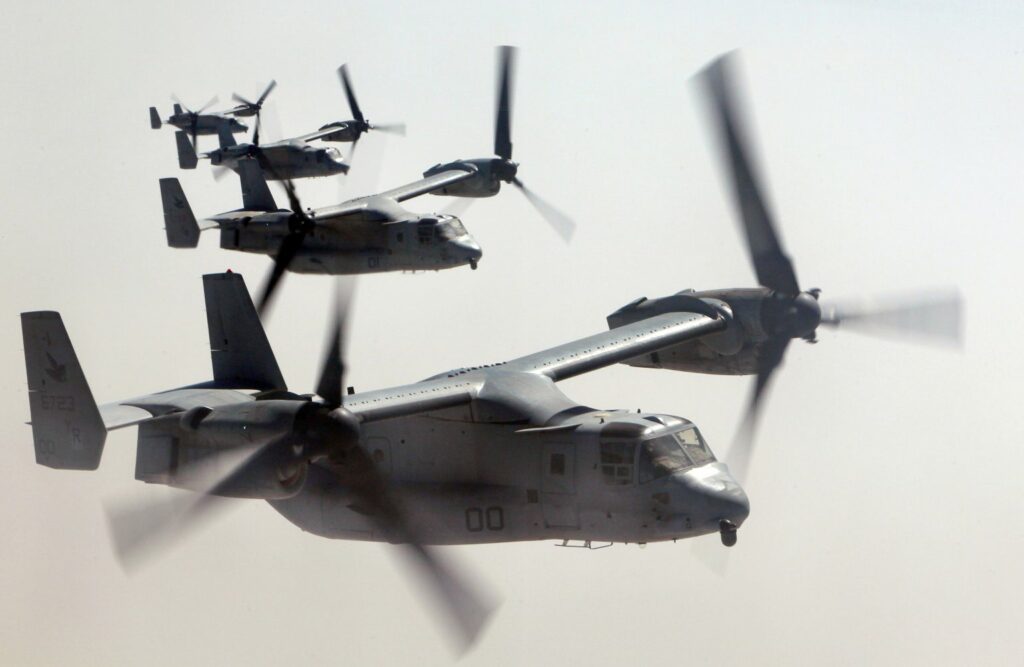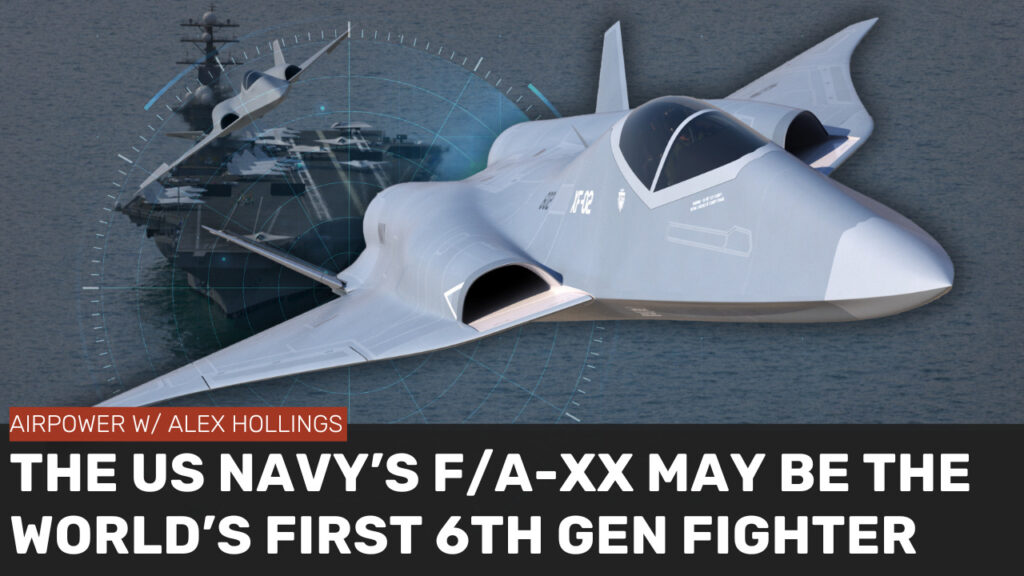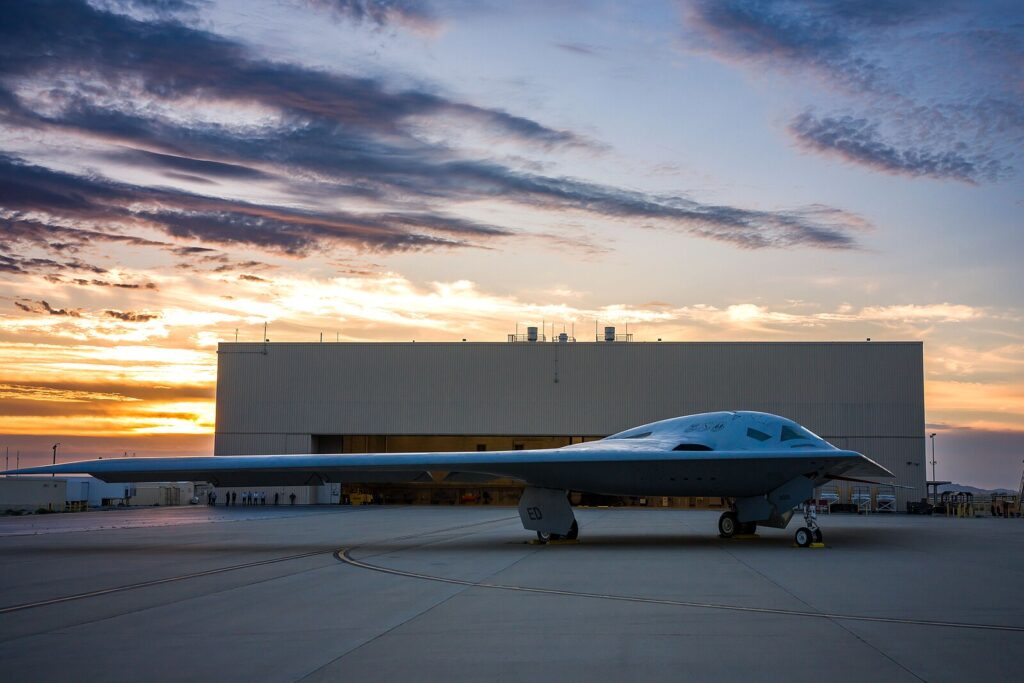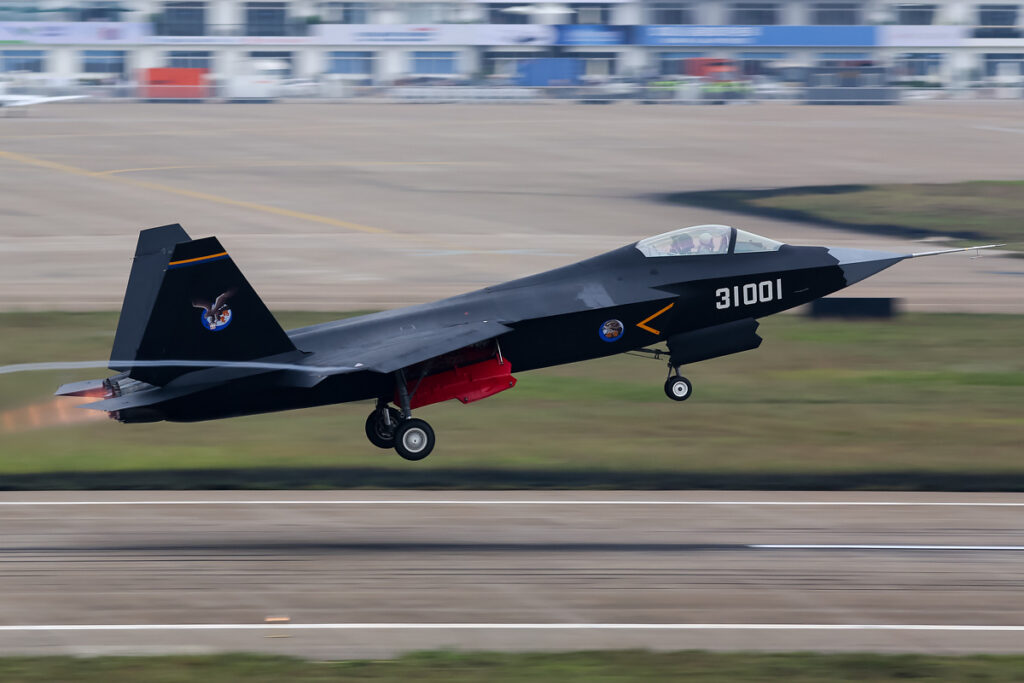A brief history (and the future) of high-speed vertical lift aircraft
- By Coffee or Die
Share This Article

This article by Carl Forsling was originally published by Coffee or Die.
“Hitting him where he ain’t” has been a basic fundamental of warfare since the beginning. Accomplishing that on larger and larger scales has been a primary objective of military leaders ever since. Victory after achieving an “envelopment” is almost always easier. The best way to do that has generally been to move faster than the enemy in order to attack from another axis, originally by horse or by ship.
Eventually, the airplane allowed the deployment of troops faster and farther and the ability to go over the enemy, not just around them. The problem with airborne troops is that they are relatively immobile and difficult to resupply after parachuting in. It took the combat deployment of the helicopter by the Marines in Korea to make “vertical envelopment” a reality.
But helicopters still aren’t close to having the speed and range of airplanes. At high speeds, helicopter rotors encounter aerodynamic effects that prevent them from generating lift — keeping them from exceeding about 200 knots.
The Future Vertical Lift, or FVL, programs aiming to build new high-tech medium lift and scout aircraft for the Army will determine the future of high-speed vertical takeoff and landing (HSVTOL). That moment has been a long time coming. The history of vertical flight from the 1950s on has been filled with many attempts to defeat the fundamental speed shortcomings of helicopters. Those efforts are usually categorized under one of four categories.
Related: Everything they got wrong about the Harrier in ‘True Lies’
Tilt-rotor

Related: Part-time commando makes history by breaking 3,000 flight hours in the Osprey
The ability to take off with rotors pointed upward, then tilt them forward to fly like an airplane on wings, is the only HSVTOL technology the military has successfully fielded so far. Currently, the V-22 Osprey is the only tilt-rotor aircraft fielded by the Department of Defense.
But experimentation with tilt-rotor designs began with the Bell XV-3, which first flew in 1955. Though it was a groundbreaking test aircraft, the materials and flight control technology of the time were not up to the challenges of flying in two very different conditions.
It took 20 years for tilt-rotors to advance to the point where they were a practical solution. The Bell XV-15 was a huge leap forward. The engines were moved out to nacelles on the wingtips, and it was fly-by-wire, meaning it used electronic signals instead of rods and cables to send inputs from the pilot to the flight controls. It carried only two pilots, but it finally proved the tilt-rotor as a practical technology.
The XV-15 led directly to today’s V-22, capable of up to 280 knots. The newest tilt-rotor, the Bell V-280 Valor — a candidate in the Army’s Future Long Range Assault Aircraft competition, has pushed that speed threshold even further, to over 305 knots.
Tilt-wing

Related: America could have had this flying tank instead of the Apache
Tilt-wing aircraft offer certain advantages over tilt-rotors, probably the biggest being that the wing isn’t blocking some of the thrust from the rotors, or “prop-rotors,” as they are often called. Weighing against this is the tilt-wing’s susceptibility to winds in a hover due to the large exposed surface area of the upward-tilted wings. Experiments along this line actually got pretty far before being overtaken by tilt-rotors.
The Canadair CL-84 Dynavert was the best example of the type. Following in the footsteps of the Hiller X-18 and the Ryan XC-142, it exemplified the superior speed of tilt-wings. Canadair was a subsidiary of General Dynamics at the time, hence the Dynavert name. The CL-84 went through a rigorous test program of nearly 1,000 hours.
The Dynavert, or “84,” performed flight demonstrations of several missions. The most obvious is transport, but it was also tested as a gunship, with gunnery and bombing tests, as well as search and rescue. It even performed the first conversion from high-speed flight to an instrument approach to a hover, completing deck landing qualifications aboard the USS Guadalcanal. Given the success of its test program, it’s surprising that the tilt-wing never got more traction. Perhaps the problem was that it matured during the tail end of the Vietnam War when the defense budget was focused on the current fight and not the future.
Ducted fans

Related: America wanted vertical take-off fighters for a nuclear WWIII
Ducted fans are another branch of the high-speed vertical takeoff and landing (VTOL) evolutionary tree that hasn’t yielded much fruit, save in sci-fi movies like Avatar. The Bell X-22A was the most successful of the type, with two prototypes flying approximately 200 hours from 1966 to 1980. The X-22A could carry six passengers and demonstrated a top speed of 274 knots. While the ducted fan concept was not a hit for the military, its high efficiency has led to its employment in many of the proposed electric VTOL “air taxis.”
Compound rotorcraft

Then there are the aircraft that have some type of rotor system on top but also generate thrust from an additional propeller or pusher tail rotor. These are generally called “compound rotorcraft.” While they haven’t reached the speeds of tilt-rotors, they are a considerable step up from conventional helicopters and sometimes can just be modified versions of existing aircraft.
The British Fairey Rotodyne of the late 1950s and early 1960s was a shockingly ambitious aircraft for the time. Technically a “compound gyrocopter,” the Rotodyne took off by directing air from its jet engines through the tips of the rotor blades. Then conventional propellers took over to move the aircraft forward. The rotors would then generate lift by turning passively in the air flowing by.
Recently, Sikorsky has combined a pusher prop in the back with coaxial rotors stacked on top of each other in its latest family of high-speed helicopters. Starting with its X2 demonstrator hitting 250 knots and its larger SB-1 Defiant hitting 230, it hopes its new spin on the old technology brings it success in the US Army’s Future Vertical Lift competitions. The company is facing the compound coaxial design off against Bell’s V-280 tilt-rotor.
The Future Vertical Lift program’s replacement of 2,100 or more Black Hawks will create the types of economies of scale that could finally make HSVTOL a game-changer, not just for the military but in aviation generally. Whether it’s the tilt-rotor Bell V-280 Valor or the compound Sikorsky SB-1 Defiant, the Army’s choice won’t affect just soldiers but society in general.
Disclosure: Carl Forsling is a manager for Bell Textron.
Read more from Sandboxx News:
- That time the Navy considered flying Harriers off battleships
- Lightning Carriers: How the Marines are teaching an old ship new tricks
- VZ-9 Avrocar: The Air Force’s flying saucer (came from Canada)
- This could be the Air Force’s future flying car of choice
- Comanche: America’s stealth helicopter that could have been
Feature image: U.S. Marine Corps photo by Sgt. Keonaona C. Paulo
Related Posts
Sandboxx News Merch
-

‘AirPower’ Classic Hoodie
$46.00 – $48.00 Select options This product has multiple variants. The options may be chosen on the product page -

‘Sandboxx News’ Trucker Cap
$27.00 Select options This product has multiple variants. The options may be chosen on the product page -

F-35 ‘Lightning’ Framed Poster
$45.00 – $111.00 Select options This product has multiple variants. The options may be chosen on the product page
Coffee or Die
Coffee or Die Magazine is Black Rifle Coffee Company’s online news and lifestyle magazine. Launched in June 2018, the magazine covers stories both about and for the military, first responder, veteran, and coffee enthusiast communities.
Related to: Airpower

The CIA used miniature models to meticulously plan high-stakes operations

Video: The Navy’s F/A-XX may become the first 6th generation aircraft in the world

Video: The Air Force is considering the B-21 for air-to-air combat

Video: How good is China’s new stealth fighter?
Sandboxx News
-

‘Sandboxx News’ Trucker Cap
$27.00 Select options This product has multiple variants. The options may be chosen on the product page -

‘AirPower’ Classic Hoodie
$46.00 – $48.00 Select options This product has multiple variants. The options may be chosen on the product page -

‘AirPower’ Golf Rope Hat
$31.00 Select options This product has multiple variants. The options may be chosen on the product page -

‘Sandboxx News’ Dad Hat
$27.00 Select options This product has multiple variants. The options may be chosen on the product page
